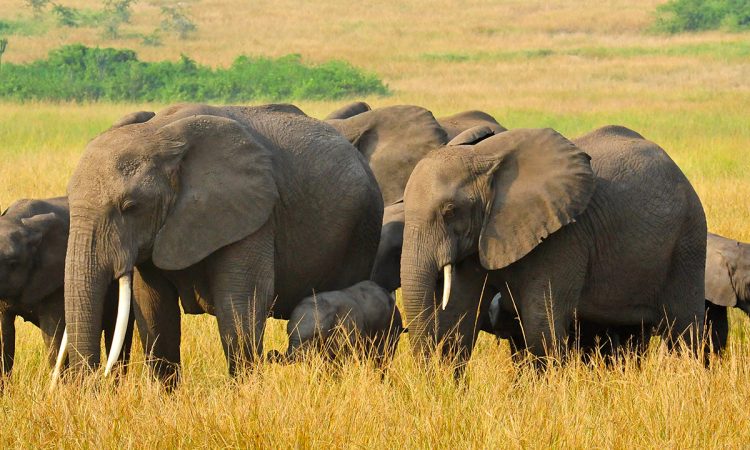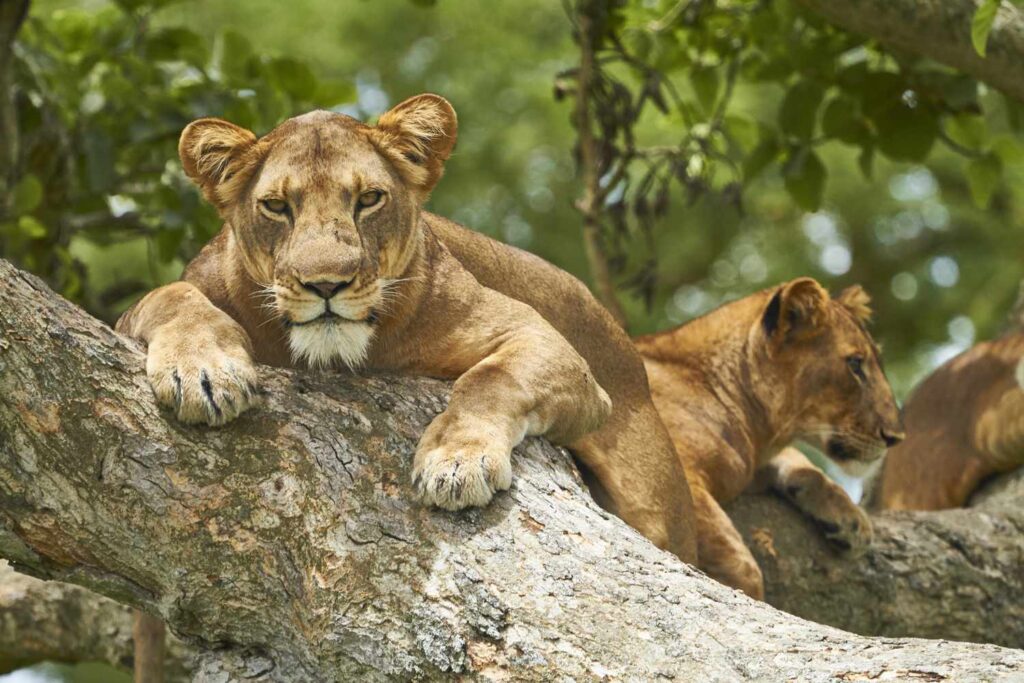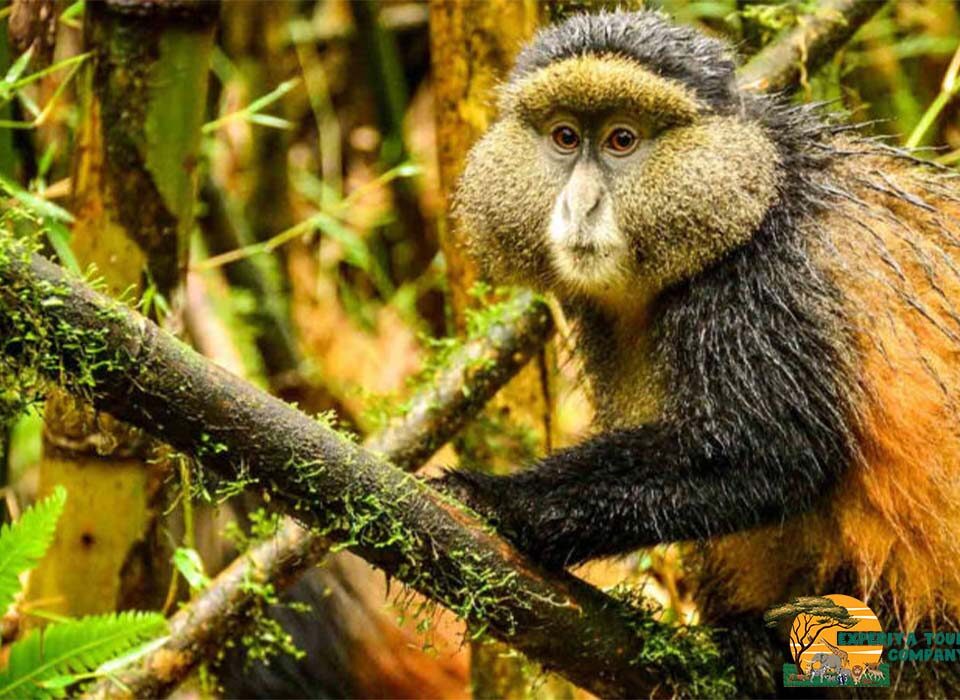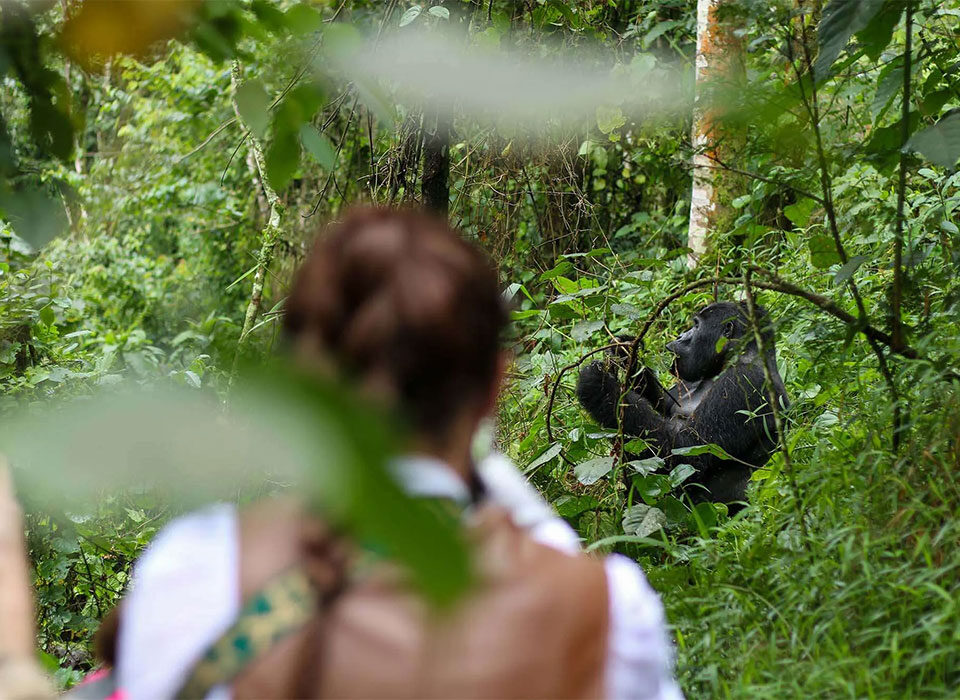
How Safe Is Gorilla Trekking in Uganda? | Uganda Gorilla Trekking Guide by Experiya Tour Company
October 23, 2025
What’s Special About the Tree-Climbing Lions of Ishasha? | Uganda Safari Guide by Experiya Tour Company
October 23, 2025What Animals Can I See in Queen Elizabeth National Park? | Uganda Safari Guide by Experiya Tour Company

What Animals Can I See in Queen Elizabeth National Park?
Queen Elizabeth National Park is one of Uganda’s most celebrated safari destinations — a vast wilderness where the rolling savannah meets lush forests, shimmering crater lakes, and the glistening Kazinga Channel. Spanning nearly 2,000 square kilometers, this magnificent park lies in western Uganda, between Lakes George and Edward, and is bordered by the snow-capped Rwenzori Mountains to the north. Known for its incredible biodiversity and scenic beauty, Queen Elizabeth National Park is home to over 95 mammal species and more than 600 bird species, making it a true paradise for wildlife lovers.
If you’re planning a Ugandan safari, you may wonder what animals you can expect to see in Queen Elizabeth National Park. The answer is simple — almost everything! From majestic lions lounging in the grasslands to playful elephants splashing in the water, and from stealthy leopards stalking their prey to pods of hippos basking in the Kazinga Channel, Queen Elizabeth National Park is alive with animal encounters that will take your breath away.
In this detailed guide, we’ll explore the incredible range of animals you can see in the park, the best places and times to spot them, and why booking your safari with Experiya Tour Company guarantees you the most rewarding wildlife experience in Uganda.
The Big Game Animals of Queen Elizabeth National Park
Queen Elizabeth National Park is one of the few places in Uganda where you can enjoy classic African safaris featuring the “Big Four” — lions, leopards, elephants, and buffaloes. (The only member missing from the traditional “Big Five” is the rhino, which you can see separately at Ziwa Rhino Sanctuary on the way to Murchison Falls National Park.)
1. African Elephant
The African elephant, the largest land mammal on Earth, is a frequent sight in Queen Elizabeth National Park. The park is home to both forest elephants and savannah elephants, which sometimes interbreed, resulting in slightly smaller, darker elephants adapted to the mixed habitats of the park.
You’ll often see herds of elephants grazing in the Kaseni plains or along the Kazinga Channel, especially during the dry season when water sources are limited. Watching these gentle giants drink, bathe, and play in the muddy waters is one of the most moving experiences in all of Africa.
2. African Buffalo
Buffaloes are abundant throughout Queen Elizabeth National Park and often roam in large herds that can number in the hundreds. You can find them in the open plains of Kasese, Kasenyi, and Ishasha, as well as along the Kazinga Channel. They are often seen mingling with elephants and antelopes, forming part of the classic Ugandan safari scene.
Their unpredictable temperament makes them one of Africa’s most dangerous animals, but from the safety of your safari vehicle, they’re an incredible sight to behold — muscular, powerful, and impressively resilient.
3. African Lion
Queen Elizabeth National Park is famous for its tree-climbing lions, a rare and fascinating behavior observed in the Ishasha sector in the southern part of the park. Unlike most lions that rest on the ground, these lions climb fig and acacia trees to escape the heat and biting insects on the savannah floor. Seeing a pride of lions draped lazily across the branches, tails dangling in the breeze, is one of the most iconic safari experiences in East Africa.
Beyond Ishasha, lions can also be found in the Kasenyi Plains, where they hunt for Uganda kob, their favorite prey. Early morning and late afternoon game drives offer the best chance to spot them.
4. Leopard
Elusive and solitary, the leopard is the most secretive of the big cats in Queen Elizabeth National Park. They are often spotted in the Mweya Peninsula, Kasenyi, and the Katunguru area, particularly around rocky outcrops and thickets where they stalk their prey. Night game drives are especially rewarding for leopard sightings, as these cats are most active after dusk.
Their stealth and grace make every leopard encounter unforgettable — a moment that perfectly captures the wild heart of Queen Elizabeth National Park.
Other Wildlife Highlights in the Park
Beyond the big game, Queen Elizabeth National Park teems with a fascinating variety of other animals, from agile antelopes to curious primates and massive hippos. Each habitat — savannah, forest, wetland, and crater lake — supports different species, creating an ever-changing safari landscape.

5. Uganda Kob
The Uganda kob, a graceful golden antelope, is the national animal of Uganda and a symbol of the park’s plains. Large herds can be seen in the Kasenyi Plains, often attracting predators such as lions and leopards. During mating season, male kobs establish territories and engage in dramatic battles for dominance — an impressive spectacle for visitors.
6. Hippos
Queen Elizabeth National Park boasts one of the highest concentrations of hippos in Africa. They dominate the Kazinga Channel, where hundreds of these massive animals can be seen wallowing in the shallow waters. A boat safari along the channel offers close-up views of hippos, often accompanied by crocodiles, elephants, and buffaloes along the banks.
At night, hippos leave the water to graze on the grasslands, and their grunts and bellows echo across the park, adding to its wild soundtrack.
7. Nile Crocodile
The Nile crocodile, Africa’s largest reptile, is another star of the Kazinga Channel. These powerful predators bask on the riverbanks, their mouths agape to regulate body temperature. They often lie in wait for unsuspecting animals that come to drink, a thrilling reminder of nature’s raw balance between hunter and prey.
8. Warthog
With their comical appearance and upright tails, warthogs bring humor to any safari. They are common across the park’s plains, grazing alongside antelopes or trotting between burrows. Despite their playful look, warthogs are incredibly fast and alert, often dashing into their holes backward so their tusks face outward — a clever defense mechanism.
9. Primates
Queen Elizabeth National Park is home to more than 10 primate species, including chimpanzees, baboons, and several types of monkeys. The Kyambura Gorge, often called “the Valley of the Apes,” is a prime location for chimpanzee trekking. Walking through the lush gorge, you may also encounter black-and-white colobus monkeys, red-tailed monkeys, and vervet monkeys.
Chimpanzees here are habituated, allowing visitors to observe them closely as they play, groom, and communicate with one another. This experience adds a fascinating primate dimension to your safari adventure.
10. Antelope Species
In addition to Uganda kob, Queen Elizabeth hosts several other antelope species, including topis, bushbucks, waterbucks, and defassa reedbucks. These elegant grazers can be seen throughout the park’s grasslands and near water sources, particularly in the Mweya Peninsula and Kasenyi Plains.
11. Forest Species in Maramagambo and Kalinzu Forests
The park’s forests — particularly Maramagambo and nearby Kalinzu Forest Reserve — offer sanctuary to several forest-dwelling animals. Here, you might spot giant forest hogs, duikers, and forest elephants, as well as smaller nocturnal creatures like bush babies.
12. Birdlife
Though not mammals, the birdlife of Queen Elizabeth National Park deserves special mention. With over 600 recorded species, it’s one of Africa’s richest birding destinations. Key sightings include the African fish eagle, shoebill stork, pelicans, kingfishers, flamingos, and papyrus gonoleks. The Kazinga Channel, Lake Munyanyange, and Maramagambo Forest are birdwatchers’ paradise.
The Ishasha Sector: Home of the Tree-Climbing Lions
One of the park’s most famous attractions is the Ishasha Sector, located in the park’s southern region near the border with the Democratic Republic of Congo. This area is home to the world-famous tree-climbing lions, a rare behavior seen in only a few places in Africa.
During the heat of the day, these lions climb fig and acacia trees to rest and escape the insects on the ground. Spotting them perched high above the savannah is a highlight of any safari — and a photographer’s dream come true.
Ishasha also teems with other wildlife, including elephants, buffaloes, topis, and antelopes, making it a perfect extension for travelers heading toward Bwindi Impenetrable National Park for gorilla trekking.
Best Time to See Animals in Queen Elizabeth National Park
The best wildlife viewing in Queen Elizabeth National Park occurs during the dry seasons, from June to September and December to February, when animals gather around water sources and vegetation is less dense. Game drives and boat safaris during these months offer the highest chance of spotting a variety of animals.
The rainy seasons (March–May and October–November) transform the park into a lush, green wonderland. While some roads may become slippery, the scenery is breathtaking, and birdlife thrives during these months — especially migratory species.
Activities for Viewing Animals
- Game Drives: Conducted in the Kasenyi Plains, Mweya Peninsula, and Ishasha Sector, these are the best for seeing large mammals like lions, elephants, and buffaloes.
- Boat Safaris: The Kazinga Channel boat cruise provides the best views of hippos, crocodiles, elephants, and countless waterbirds.
- Chimpanzee Tracking: In Kyambura Gorge or Kalinzu Forest.
- Nature Walks: Ideal for spotting smaller mammals and birdlife.
- Night Game Drives: Excellent for nocturnal species like leopards, genets, and hyenas.
Experience Queen Elizabeth National Park with Experiya Tour Company
A safari in Queen Elizabeth National Park offers one of the most diverse wildlife experiences in East Africa — but to make the most of it, you need expert guidance, careful planning, and experienced local knowledge. That’s where Experiya Tour Company comes in.
Experiya Tour Company is one of Uganda’s leading safari operators, specializing in wildlife safaris, gorilla trekking, and tailor-made East African adventures. Their team of professional guides, reliable vehicles, and carefully selected lodges ensures that every moment of your safari is safe, comfortable, and deeply rewarding.
When you travel with Experiya, you don’t just see animals — you connect with nature, learn from passionate guides, and enjoy an authentic Ugandan experience that stays with you for a lifetime. Whether you want a classic game drive through the Kasenyi Plains, a tranquil boat cruise on the Kazinga Channel, or an adventurous journey from Queen Elizabeth to Bwindi for gorilla trekking, Experiya Tour Company will make it all possible.
For an unforgettable wildlife adventure filled with lions, elephants, hippos, and more, travel with Experiya Tour Company — your trusted partner for discovering the wild heart of Uganda.



